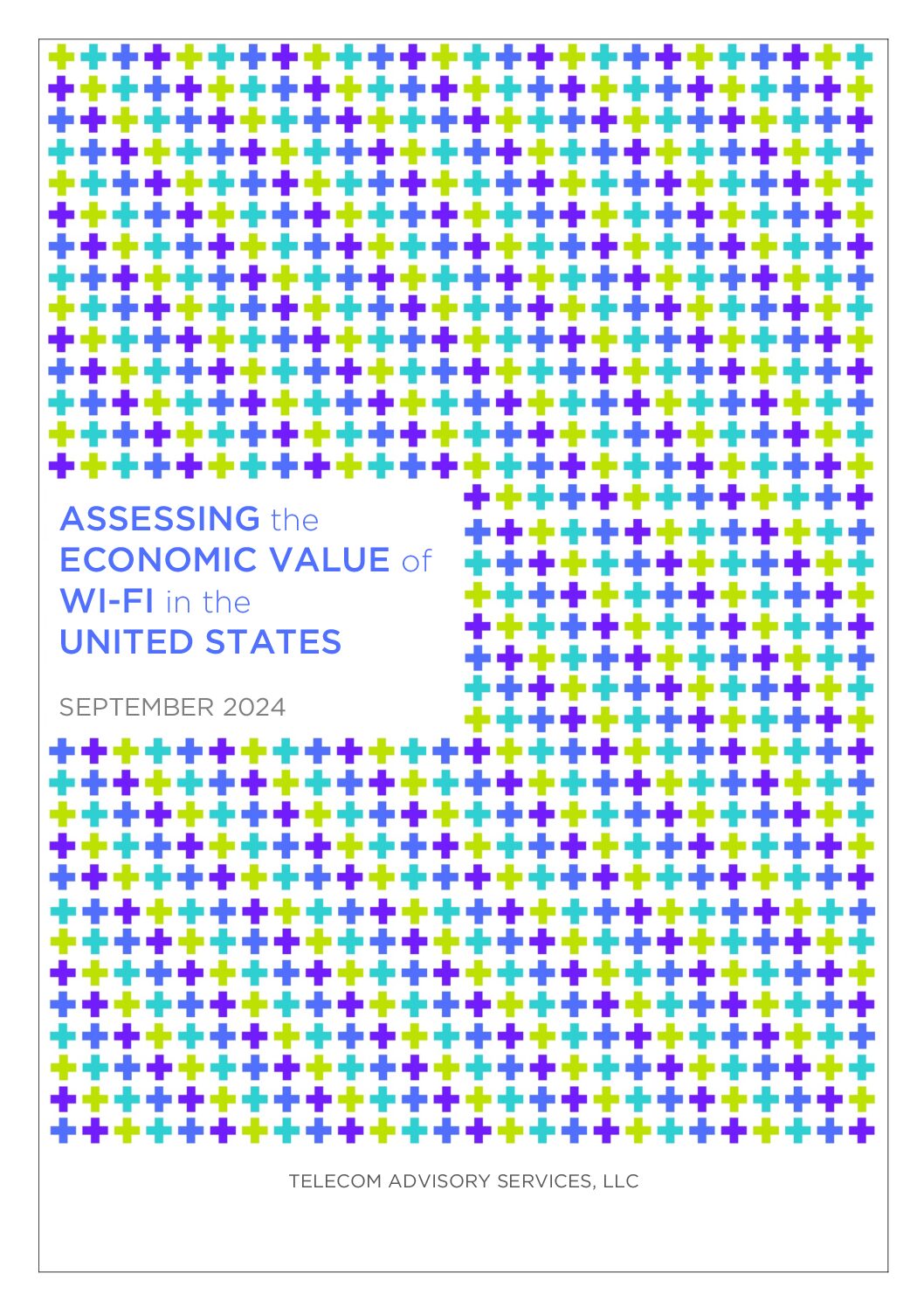

Americans use Wi-Fi from the minute they wake up to the minute they go to sleep. It’s no surprise that such a critical resource fuels robust job growth across the U.S. and generates tremendous economic value year after year. Here’s a look at how prioritizing unlicensed spectrum for Wi-Fi has bolstered the U.S. economy—and what we stand to gain when policymakers continue prioritizing this vital American resource.
Wi-Fi By the Numbers:
-Driving economic value: By 2027, the annual economic value of Wi-Fi is projected to reach $2.4 trillion, including an estimated $514 billion in consumer benefit, $624 billion in producer surplus, and $1.29 trillion in GDP contribution.
-Powering job creation: Wi-Fi generated more than 7 million American jobs in 2023 alone and is projected to create more than 13 million jobs by 2027 and approximately 21 million jobs by 2032.
In 2020, the Trump administration’s Federal Communications Commission (FCC) voted unanimously to allow unlicensed Wi-Fi to share access to 6 GHz spectrum with mission-critical public safety, utility and broadcast users to keep pace with constantly growing Wi-Fi demands, deliver “faster, more efficient broadband connections for the American people,” and not disrupt existing users. The decision was bipartisan, first-in-the-world, forward-looking and now considered an unmitigated success for American consumers and businesses.
-Exceeding expectations. The move to open access to the 6 GHz band was expected to generate more than $180 billion in U.S. revenue over the next five years. In reality, it has far exceeded expectations, generating $870 billion in 2023 and 2024 alone– projected to increase to $1.2 trillion by 2027.
-Fueling rapid job expansion. Even though the FCC only opened the 6 GHz band for unlicensed use five years ago, it has already supported 2 million jobs in 2023 and is projected to reach nearly 8 million jobs by 2027 and more than 13.5 million jobs by 2032.
As demand for Wi-Fi is skyrocketing, with no signs of slowing down, policymakers should prioritize allocating enough unlicensed spectrum to keep pace. Making more mid-band spectrum (including 7 GHz) available for Wi-Fi would not only allow the United States to keep up with growing consumer demand, it will also create millions of jobs and bolster our economy for years to come. For instance:
-Unlocking Wi-Fi’s economic potential. Opening the 7 GHz band for unlicensed Wi-Fi use will generate at least $79.62 billion in cumulative economic value between 2025 and 2027, with yearly values increasing significantly over time.
-Continuing to support job creation. The projected economic value created by allocating 500 megahertz of 7 GHz spectrum to Wi-Fi 7 would generate an estimated annual employment gain of approximately 1.5 million U.S. jobs in 2032 alone.